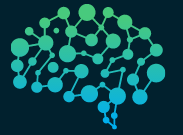Technology Behind ChatGPT
Technology Behind ChatGPT 3.5:The field of Natural Language Processing (NLP) has experienced a paradigm shift with the advent of advanced language models, and one such groundbreaking model is ChatGPT. Built on the robust foundation of the GPT-3.5 architecture, ChatGPT exemplifies the evolution of artificial intelligence in understanding and generating human-like text. This article delves into the intricacies of the technology behind ChatGPT, exploring the key components that contribute to its remarkable capabilities.
1. The Rise of Transformer Architecture
The GPT-3.5 architecture belongs to the family of transformer-based models, introduced by Vaswani et al. in 2017. The transformer architecture marked a departure from traditional recurrent neural networks (RNNs) and opened new frontiers in sequence processing tasks. Its unique self-attention mechanism allows the model to consider all words in a sequence simultaneously, capturing long-range dependencies and improving contextual understanding.
2. Pre-training and Fine-tuning Dynamics
At the core of ChatGPT’s prowess lies the process of pre-training and fine-tuning. In the pre-training phase, the model is exposed to vast and diverse text corpora, learning the intricacies of language, grammar, and even world knowledge. Fine-tuning follows, where the pre-trained model is adapted to specific tasks or domains. For ChatGPT, this involves exposing the model to datasets containing examples of conversational interactions, refining its ability to generate coherent and contextually relevant responses.
3. Attention Mechanism
The transformer’s attention mechanism is a critical element in the success of GPT-3.5 and, consequently, ChatGPT. This mechanism enables the model to assign varying levels of importance to different parts of the input sequence, allowing it to focus on relevant information during both pre-training and fine-tuning. The attention mechanism is instrumental in capturing nuanced contextual information, fostering the generation of more human-like responses.
4. Scaling Up: The Power of Parameters
A defining characteristic of GPT-3.5 is its unprecedented scale, boasting a staggering 175 billion parameters. This vast number of parameters empowers the model to capture intricate patterns in data, facilitating a nuanced understanding of language across diverse contexts. The scalability of GPT-3.5 contributes to its versatility and effectiveness in various language-related tasks.
5. Applications of ChatGPT
ChatGPT finds applications across a spectrum of domains. From enhancing customer support interactions to aiding content creation and even language translation, its ability to engage in contextually relevant conversations makes it a versatile tool for developers and businesses. Exploring real-world implementations showcases the tangible impact of ChatGPT in improving user experiences and streamlining communication processes.
Must Read..
6. Ethical Considerations and Responsible AI
As with any powerful technology, the deployment of large language models like ChatGPT raises ethical considerations. Issues such as bias, misinformation, and potential misuse demand careful scrutiny. Developers and researchers are actively addressing these challenges to ensure responsible and ethical use, emphasizing the need for transparency, accountability, and continuous monitoring of model behavior.
7. Future Directions and Challenges
The journey of ChatGPT is part of a broader narrative in the evolution of NLP. Looking ahead, researchers are exploring avenues to improve model interpretability, reduce biases, and enhance the understanding of complex and nuanced language. The article concludes by highlighting the ongoing efforts to address challenges and emphasizing the importance of collaborative efforts in shaping the future of language models.
Conclusion
The technology behind ChatGPT, rooted in the GPT-3.5 architecture, represents a significant leap in the realm of natural language processing. Its transformative impact on various applications underscores the potential of advanced language models. However, with this power comes a responsibility to navigate ethical considerations and ensure the responsible use of AI technologies. As we continue to unravel the intricacies of language models, the journey towards more sophisticated, ethical, and effective AI applications unfolds.

